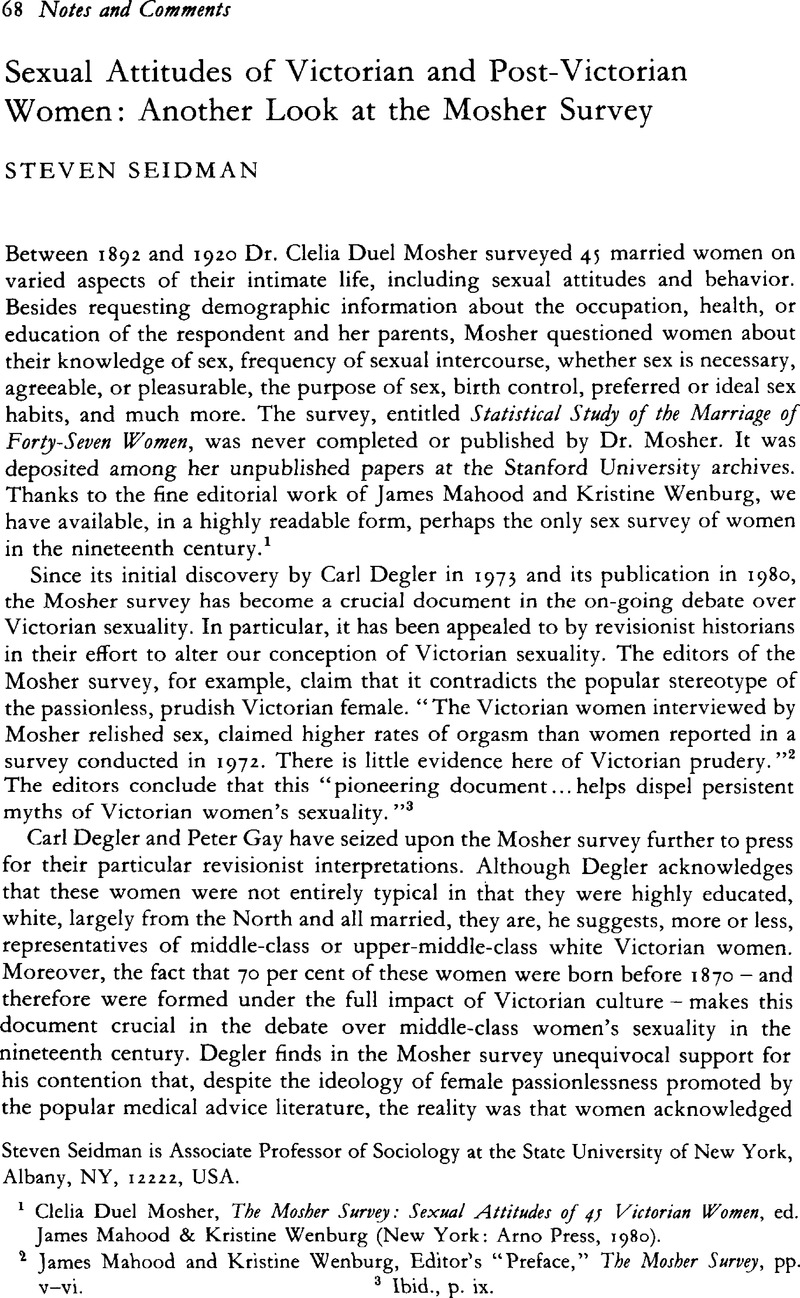Published online by Cambridge University Press: 16 January 2009

1 Mosher, Clelia Duel, The Mosher Survey: Sexual Attitudes of 45 Victorian Women, ed. Mahood, James & Wenburg, Kristine (New York: Arno Press, 1980).Google Scholar
2 Mahood, James and Wenburg, Kristine, Editor's “Preface,” The Mosher Survey, pp.v–lvi.Google Scholar
3 Ibid., p. ix.
4 Degler, Carl, “What Ought to Be and What Was: Women's Sexuality in the Nineteenth Century,” American Historical Review, 79 (12 1974), 1488.CrossRefGoogle ScholarPubMed
5 Gay, Peter, The Bourgeois Experience, Vol. I, Education of the Senses (New York: Oxford University Press, 1984), p. 141.Google Scholar
6 Except for a few questionnaires, Dr. Mosher dated each interview.
7 The question on orgasmic experience reads as follows: “Do you always have a venereal orgasm?” Unfortunately, this question does not allow us to ascertain if women typically or frequently had an orgasm. Nor does this question clarify how an orgasm was induced and what it meant to these women. For example, one respondent replied to the above question, “I have had but one [orgasm] during my whole married life, that one not complete and occasioned by my husband's being very near to me but not by intercourse” The Mosher Survey, 175.Google Scholar
8 Many historians have noted changes in sexual norms, meanings, and practices in the period immediately preceding and after World War One. Although there is disagreement over the interpretation of these changes and their precise date, these changes are typically related to the rise of new medical–scientific discourses, a shift to a mass-consumption economy, changes in women's social position, and so on. See, for example, Burnham, John, “The Progressive Era Revolution in American Attitudes Toward Sex,” Journal of American History, 59 (03 1973)CrossRefGoogle Scholar; Epstein, Barbara, “Family, Sexual Morality, and Popular Movements in Turn-of-the-Century America,” in Powers of Desire: The Politics of Sexuality, ed. Snitow, Ann et al. (New York: Monthly Review Press, 1983)Google Scholar; May, Elaine Tyler, Great Expectations: Marriage and Divorce in Post-Victorian America (Chicago: University of Chicago Press, 1980)Google Scholar; Pass, Paula, The Damned and the Beautiful (New York: Oxford University Press, 1977)Google Scholar; Seidman, Steven, “Re-Making Love and Marriage: Continuity and Change in Post-Victorian Codes of Intimacy,”Google Scholar unpublished manuscript.